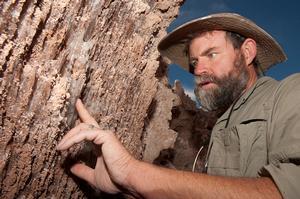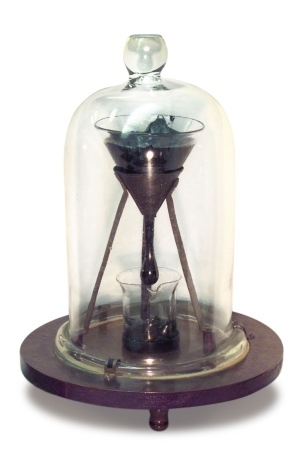Stewart Brand's Blog, page 69
July 15, 2013
Craig Childs Seminar Primer
Monday July 29, 02013 at the Marines’ Memorial Theater, San Francisco
When thinking about the planet, climate change, and our environmental future, it’s easy to get caught up in the numbers and lose track of what things actually look like on the ground. Enter Craig Childs, one of the world’s great intrepid travelers and story-tellers. Childs has written over a dozen critically-acclaimed books, as well as being a regular contributor to NPR’s Morning Edition and many other publications.
Childs finds the places on Earth that are most geologically or climatically dangerous and hangs out, observing closely, giving personal as well as scientific perspective. There are places across the planet that give hints as to what life would look like with a radical environmental upheaval– landscapes of ice, lava, salt-water, dust, and rock.
These ecosystems stay at the margins of our inhabited landscapes, waiting for the right combination of conditions that allow them to expand once again. At different points in Earth’s history the planet has been dominated by each of these landscapes–and yet very few people visit these historic ecosystems.
Craig Childs’ stories alternate between scientific narrative and dream-like vision, stark warning and poetic celebration. The landscapes he documents are often some of the most remote and desolate on the planet, and yet Childs always manages to find the few life-forms that manage to survive these climates. His stories from the edges of the world allow us a glimpse into our planet’s past and–very likely– much of its future.
To learn more about the ecological systems that dominated our planet for millions of years, come see Craig Childs at the Marine Memorial Theatre on Monday, July 29th.
Subscribe to the Seminars About Long-term Thinking podcast for more thought-provoking programs.

July 12, 2013
Long Now’s San Francisco Public Space in Transition
The Long Now Museum and Store is closed. It’s an important first step to opening The Long Now Salon our new public space in the same location.
While it’s exciting, for those of us who know the space well, Long Now staff, volunteers and anyone who has attended events or Seminar receptions there, these images may be a bit unsettling. A place we know well, where a lot of thoughts were provoked and much fun was had, is no more. But it is just dormant, transitioning into a different kind of public, social space.
The Long Now Salon will be an inspiring and beautiful venue that is welcoming to the public and our members, celebrating thought, conversation and long-term thinking. A kind of 21st Century version of the salons that fueled the Enlightenment in Europe. And, as with those hosted gatherings of the past, there’s a remarkably simple interaction model at the core: bringing interesting people together for conversation over drinks.
Right now there is only renovation waiting to happen. We’ve relocated our office and the contents of the museum and store space we opened to the public in 02006. Most of our prototypes and other project artifacts are in storage elsewhere, here’s what that looks like:
The future Salon space is empty except for our Orrery prototype and a few remnants of the Museum design. Like a quote about our Clock project showing sociality has always been part of the design:
The Orrery prototype for the Clock of the Long Now is one of the most recognizable of Long Now’s museum pieces. It has a featured place in the new Salon design. What is an orrery? Per Wikipedia:
An orrery is a mechanical device that illustrates the relative positions and motions of the planets and moons in the Solar System in a heliocentric model. Though the Greeks had working planetaria, the first orrery that was a planetarium of the modern era was produced in 1704, and one was presented to the Earl of Orrery — whence came the name. They are typically driven by a clockwork mechanism with a globe representing the Sun at the centre, and with a planet at the end of each of the arms.
The Long Now Orrery prototype is 8-feet tall (a fraction of the size of the one that will be in the final Clock) and shows the planets that are visible to the unaided eye (Mercury through Saturn).
And right now it’s in a lot of bubble wrap as we make prep for construction. It’s a bit like a chrysalis, except when the Orrery is unwrapped it will be the same while the room it is in will look like this:
There are some… very exciting details that we have yet to reveal about the project. We’ll have some news for you next week. In the meantime, learn more about the Salon project here.

July 11, 2013
Long Bets table at WorldFuture 2013
From July 19th- 21st in Chicago, the World Future Society will be hosting their annual conference, WorldFuture 2013. The conference has over 60 sessions, workshops, and special events over the course of two and a half days, including a keynote from former SALT speaker Nicholas Negroponte.
Topics range from Artificial Intelligence and the future of education to gaming and politics. The World Future Society was founded in 1966 as an organization dedicated to thinking about the future, and has been publishing the forecasting magazine The Futurist since 1967.
This year, Long Now will be hosting a Long Bets table at the conference. For this weekend only, we will be waiving the $50 prediction fee and giving conference guests the chance to make predictions for free. We’re hoping that the thought-provoking panels and discussions at the conference will lead to some new exciting predictions and bets.
In the long-term, Long Bets aims to track the specific elements common to predictions that succeed, thus providing a better framework for everyone to think about the future. To attend the conference and visit our table, please visit the WorldFuture 2013 site.
image credit: http://vintagefuture.tumblr.com/

Long-Term Research: Marathon Science
Scientific experiments often take place in the blink of an eye: two protons can travel 17 miles to slam into each other within less than a second, computer programs can analyze a vast collection of data within minutes, and experimental drugs can take effect in as little as a few hours.
But here and there, a few ongoing projects remind us that science is ultimately a very long-term pursuit, and that the small experiments it runs add up to some very large and important answers. Nature has compiled a list of some of the world’s longest-running research projects.
From the 400-year effort to record sunspot activity, to the very slow-moving pitch-drop experiment, it writes,
“Experiments operating at this pace are challenged by shifting research priorities and technologies, and their existence is regularly threatened by funding droughts and changes in stewardship. But they are bound together by the foresight of the scientists who started them and the patience and dedication of those who carry the torch. If persistence predicts a long and healthy life – as one 90-year study of human longevity has suggested – then the scientists featured here could set some records themselves.”

July 9, 2013
Long Now Salon funding passes $200,000 thanks to gift from writer Neil Gaiman
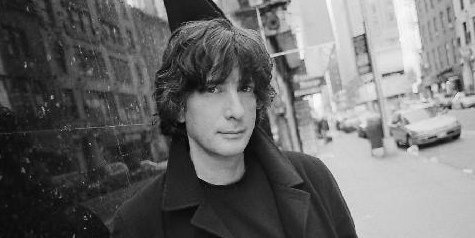
photo by Kimberly Butler
Famed author Neil Gaiman has generously boosted The Long Now Salon “brickstarter” with a donation of $25,000. We are honored to have his support and encouragement as we near the 50% mark of our Salon fundraising which we must reach to start construction this summer.
“I really believe in Long Now’s mission, and I am excited about this project which puts such focus on knowledge and conversation and books. I can’t wait to see it open and I look forward to visiting.”
-Neil Gaiman
In recognition of his gift, Long Now will engrave the dedication of his choice on a shelf in the Manual for Civilization. The Manual is a symbol of our mission to foster long-term thinking and responsibility, a collection of thousands of books which will fill shelves from floor to ceiling in our new Salon. Curated collaboratively between Long Now and our members and evolving over time, this living archive represents the knowledge that would be most useful to help restart civilization.
Neil Gaiman is the author of Coraline, American Gods, The Sandman comic series, and the new novel The Ocean at the End of the Lane which recently hit #1 on the New York Times best seller list.

July 8, 2013
The Artangel Longplayer Letters: Nassim Taleb writes to Stewart Brand
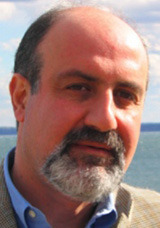
In April, Brian Eno wrote to Nassim Nicholas Taleb, asking, ”how can we even think about designing for a future that we can’t imagine?”
The letter he sent was the inaugural Longplayer Letter, the first in a series of letters published by ArtAngel and Jem Finer’s Longplayer – a project to compose and perform a 1,000 year-long piece of music (running now for 13 years).
The letters are to be written in relay-style: in responding to Eno’s musings, Taleb wrote his letter to Long Now co-founder Stewart Brand. In it, he proposes a methodology for assessing risks to our planet:
Dear Stewart,
I would like to reply to Brian Eno’s important letter by proposing a methodology to deal with risks to our planet, and I chose you because of your Long Now mission.
First let us put forward the Principle of Fragility As Nonlinear (Concave) Response as a central idea that touches about anything.
1. PRINCIPLE OF FRAGILITY AS NONLINEAR (CONCAVE) RESPONSE
If I fall from a height of 10 meters I am injured more than 10 times than if I fell from a height of 1 meter, or more than 1000 times than if I fell from a height of 1 centimeter, hence I am fragile. Every additional meter, up to the point of my destruction, hurts me more than the previous one. This nonlinear response is central for everything on planet earth, from objects to ideas to companies to technologies.
Another example. If I am hit with a big stone I will be harmed a lot more than if I were pelted serially with pebbles of the same weight.
If you plot this response with harm on the vertical and event size on the horizontal, you would notice the plot curving inward, hence the “concave” shape, which in the next figure I compare to a linear response. We can already see that the fragile is harmed disproportionately more by a large event (Black Swans) than by a moderate one.
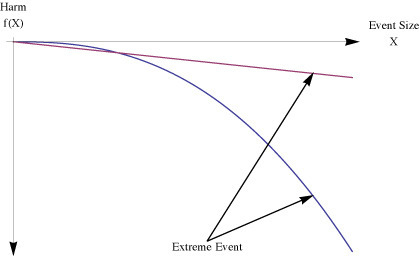
Figure 1 – The nonlinear response compared to the linear.
The general principle is as follows:
Everything that is fragile and still in existence (that is, unbroken), will be harmed more by a certain stressor of intensity X than by k times a stressor of intensity X/k, up to the point of breaking.
Why is it a general rule? This has something to do with the statistical structure of stressors, with small deviations much, much more frequent than large ones. Look at the coffee cup on the table: there are millions of recorded earthquakes every year. Simply, if the coffee cup were linearly sensitive to earthquakes, it would not have existed at all as it would have been broken in the early stages of the graph.
Anything linear in harm is already gone, and what is left are things that are nonlinear.
Now that we have this principle, let us apply it to life on earth. This is the basis of a non-naive Precautionary Principle that the philosopher Rupert Read and I are in the process of elaborating, with precise policy implications on the part of states and individuals.
Everything flows —by theorems — from the principle of nonlinear response.
2. PRECAUTIONARY RULES
Rule 1 – Size Effects. Everything you do to planet earth is disproportionally more harmful in large quantities than in small ones. Hence we need to split sources of harm as much as we can (provided these don’t interact). If we dropped our carbon by, say, 20% we may reduce the harm by more than 50%. Conversely we may double our risk with just an increase of 10%.
It is wrong to discuss “good” or “bad” without assigning a certain quantity to it. Most things are harmless in some small quantity and harmful in larger ones.
Because of the “globalization” and the uniformization of tastes we now concentrate our consumption across the same items, say, tuna and wheat, whereas ancient population were more opportunistic and engaged in “cycling”, picking up what was overabundant so to speak.
Rule 2 – Errors. What is fragile dislikes the “disorder cluster” beyond a point, which includes volatility, variability, error, time, randomness, and stressors (The “Fragility” Theorem).
This rule means that we can —and should— treat errors as random variables. And we can treat what we don’t know —including potential threats— as random variables as well. We live in a world of higher unpredictability than we tend to believe. We have never been able to predict our own errors, and things will not change any time soon. But we can consider types of errors within the framework presented here.
Now, for mathematical reasons (a mechanism called the “Lindy Effect”), linked to the relationship between time and fragility, mother nature is vastly “wiser” so to speak than humans, as time has a lot of value in detecting what is breakable and what is not. Time is also a bullshit detector. Nothing humans have introduced in modern times has made us unconditionally better without unpredictable side effects, and ones that are usually detected with considerable delays (transfats, steroids, tobacco, Thalidomide, etc.)
Rule 3 – Decentralizing Variations (the 1/N rule). Mother nature produces small isolated generally independent variations (technically belonging to the thin-tailed category, or “Mediocristan”) and humans produce fewer but larger ones (technically, “fat tailed” category, or “Extremistan”). In other words nature is a sum of micro variations (with, on the occasion, larger ones), human systems tend to create macro shocks.
By a statistical argument, had nature not produced thin-tailed variations, we would not be here today. One in the trillions, perhaps the trillions of trillions, of variations would have terminated life on the planet.
The next two figures show the difference between the two separate statistical properties.
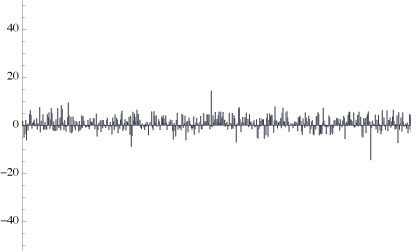
Figure 2 Tinkering Bottom Up, Broad Design. Mother Nature: no single variation represents a large share of the sum of the total variations. Even occasional mass extinctions are a blip in the total variations
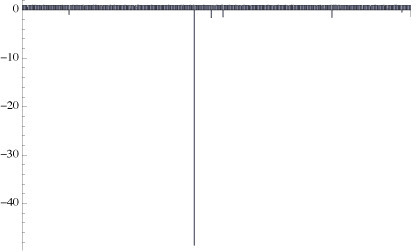
Figure 3 Top-down, Concentrated Design Human made clustering of variations, where a single deviation will eventually dominate the sum.
Now apply the Principle of Fragility As Nonlinear (Concave) Response to Figures 2 and 3. As you can see a large deviation harms a lot more than the cumulative effect of small ones because of concavity.
This in a nutshell explains why a decentralized system is more effective than one that is command-and-control and bureaucratic in style —it is that errors are decentralized and do not spread. It also explains why large corporations are problematic, particularly when powerful enough to lobby their way into state support.
This method is called the 1/N rule of maximal diversification of source of problems —a general one I apply when confronting decisions in fat-tailed domains.
Rule 4 – Nature and Evidence. Nature is a better statistician than humans, having produced > trillions of “errors” or variations without blowing up; it is a much better risk manager (thanks to the Lindy effect). What people call the “naturalistic fallacy” applies to the moral domain, not in the statistical or the risk areas. Nature is certainly not optimal but it has trillions of times the sample evidence of humans, and it is still around. It is a matter of a long multidimensional track record versus a short low-dimensional one.
In a complex system it is impossible to see the consequences of a positive action (from the Bar Yam theorem), so one needs —like nature— to keep errors isolated and thin-tailed.
Implication 1 (Burden of Evidence). The burden of evidence is not on nature but on humans disrupting anything top-down to prove their errors don’t spread and don’t carry consequences. Absence of evidence is vastly more nonlinear than evidence of absence. So if someone asks “do you have evidence that I am harming the planet?”, ignore him: he should be the one producing evidence, not you. It is shocking how people can put the burden of evidence the wrong way.
Implication 2 (Via Negativa). If we can’t predict the effects of a positive action (adding something new), we can predict the effect of removing a substance that has not been historically part of the system (removal of smoking, carbon pollution, carbs from diets).
3. POLICY IMPLICATIONS
This tool of analysis is more robust than current climate modeling, as it is anticipatory, not backward fitting. The policy implications are:
Genetically Modified Organisms, GMOs. Top-down modifications to the system (through GMOs) are categorically and statistically different from bottom up ones (regular farming, progressive tinkering with crops, etc.) To borrow from Rupert Read, there is no comparison between the tinkering of selective breeding and the top-down engineering of taking a gene from a fish and putting it into a tomato. Saying that such a product is natural misses the statistical process by which things become “natural”.
What people miss is that the modification of crops impacts everyone and exports the error from the local to the global. I do not wish to pay —or have my descendants pay — for errors by executives of Monsanto. We should exert the precautionary principle there —our non-naive version — simply because we would discover errors after considerable damage.
Nuclear. In large quantities we should worry about an unseen risk from nuclear energy. In small quantities it may be OK —how small we should determine, making sure threats never cease to be local. Keep in mind that small mistakes with the storage of the nuclear are compounded by the length of time they stay around. The same with fossil fuels. The same with other sources of pollution.
But certainly not GMOs, because their risk is not local. Invoking the risk of “famine” is a poor strategy, no different from urging people to play Russian roulette in order to get out of poverty. And calling the GMO approach “scientific” betrays a very poor —indeed warped —understanding of probabilistic payoffs and risk management.
The general idea is that we should limit pollution to small, very small sources, and multiply them even if the “scientists” promoting them deem any of them safe.
**********
There is some class of irreversible systemic risks that show up too late, that I do not believe are worth bearing. Further, these tend to harm other people than those who profit from them. So here is my closing quandary.
The problem of execution: So far we’ve outlined a policy, not how to implement it. Now, as a localist fearful of the centralized top-down state, I wish to live in a society that functions with similar statistical properties as nature, with small thin-tailed non-spreading mistakes, an environment in which the so-called “wisdom of crowds” works well and the state intervention is limited to law enforcement (and that of contracts).
Indeed, we should worry about the lobby-infested state, given the historical tendency of bureaucrats to produce macro harm (wars, disastrous farming policies, crop subsidies encouraging the spread of corn syrup, etc.) But there exists an environment that is not quite that of the “wisdom of crowds”, in which spontaneous corrections are not possible, and legal liabilities difficult to identify. I’ve discussed this in my book Antifragile where some people have an asymmetric payoff at the expense of society: keep the profits and transfer harm to others.
In general, the solution is to move from regulation to penalties, by imposing skin-in-the game-style methods to penalize those who play with our collective safety —no different from our treatment of terrorist threats and dangers to our security. But in the presence of systemic —and branching out —consequences the solution may be to rely on the state to ban harm to citizens (via negativa style ), in areas where legal liabilities may not be obvious and easy to track, particularly harm hundreds of years into the future. For the place of the state is not to get distracted in trying to promote things and concentrate errors, but in protecting our safety. It is hard to understand how we can live in a world where minor risks are banned by the states, say marijuana or other drugs, but systemic threats such as those represented by GMOs encouraged by them. What is proposed here is a mechanism of subsidiarity: the only function of the state is to do things that cannot be solved otherwise. But then, it should do them well.
**********
I thank Brian Eno for the letter and for making me aware of all these difficulties. I hope that the principle of fragility helps you, Stewart in your noble mission to insure longevity for the planet and the human race. We are not that many Extremistan-style mistakes away from extinction. I therefore sign this letter by adopting your style of adding a 0 to the calendar date:
Nassim Nicholas Taleb,
July 3, 02013
References:
Bar-Yam, Y., 1997, Dynamics of Complex Systems, Westview Press, p 752
Taleb, N. N., 2012, Antifragile: Things that Gain From Disorder, Penguin and Random House.
Taleb, N. N., and Douady, R., 2012, Mathematical Definition, Mapping, and Detection of (Anti)Fragility, in print, Quant Fin, Preprint: http://arxiv.org/abs/1208.1189
With thanks to William Goodlad.
© Nassim Nicholas Taleb, 2013
Future letters will be published on the Longplayer site, the Long Now blog and Artangel’s site. Please leave comments, if you have them, on the Longplayer site.

July 3, 2013
Ed Lu Seminar Media
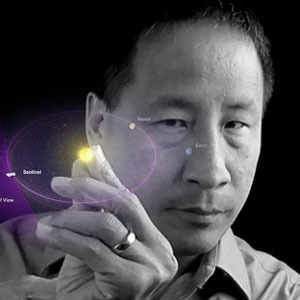 This lecture was presented as part of The Long Now Foundation’s monthly Seminars About Long-term Thinking.
This lecture was presented as part of The Long Now Foundation’s monthly Seminars About Long-term Thinking.
Anthropocene Astronomy: Thwarting Dangerous Asteroids Begins with Finding Them
Tuesday June 18, 02013 – San Francisco
Video is up on the Lu Seminar page for Members.
*********************
Audio is up on the Lu Seminar page, or you can subscribe to our podcast.
*********************
The last killer asteroid- a summary by Stewart Brand
Kevin Kelly wrote the following about Ed Lu’s Seminar About Long-term Thinking (SALT) titled “Anthropocene Astronomy: Thwarting Dangerous Asteroids Begins with Finding Them”…
Last night’s SALT talk was one of the most important ones we ever hosted. For several reasons:
Nine years ago, SALT hosted Rusty Schweickart’s talk on the long term asteroid problem, wherein he presented the problem and challenge. Now nine years later, Ed Lu presented a very workable solution. There’s an arc of thinking big over a span of time that we participated in.
While most SALT talks focus on problems, last night’s was extremely focused on a solution.
The solution itself is a (workable) long term project, that has a delayed gratification.
The problem being solved is neither trivial nor superficial but complicated and existential. It’s a big deal.
If B612 was not already doing this, it would make a perfect Long Now project.–KK
I agree. Consider this summary a pitch to donate to the cause. I’ll end with a link to B612’s website.
Lu began by noting that deflecting lethal asteroids is the easy part. We know how to do it and already have the needed technology. Years before a threatening asteroid converges with Earth, we can ram it from behind with a rocket with the precise amount of energy needed to speed it up just enough to miss our planet and keep on missing us in the future.
Funding such a mission will be straightforward. Once you know when (and even where) a catastrophic impact will occur, there will be abundant motivation to pay for heading it off. With good sky reconnaissance, we’ll have years of warning. But that reconnaissance doesn’t exist yet.
Detection of asteroids is the hard part. There are about a million near-Earth objects (NEOs) of dangerous size (over 50 meters), but only one percent of them—10,000—have been located so far.
The best way to locate the rest is with an infrared-detecting telescope following Venus in its orbit around the Sun, looking outward to Earth’s orbit. With the intense radiation of the Sun behind it, the telescope can detect the infrared glow of asteroids and precisely gauge their size and orbits, building a detailed threat map good for centuries.
What are we looking for? Asteroids that Lu calls “city killers” are about the size of a theater—an airburst of one could destroy the whole San Francisco Bay Area. “In our children’s lifetime the chance of impact from one of these is about 30 percent.” In the same period there is a 1 percent chance of an asteroid impact equivalent to all the bombs in World War II times 5; it could kill 100 million people. “We buy fire insurance against risk with lower probability than that.” Then there’s a kilometer-size asteroid, which would destroy all of humanity permanently. The chance of collision with one in our children’s lifetime—.001 percent.
No government has stepped up to detecting asteroids in the detail needed, so astronauts Rusty Schweickart and Ed Lu and their B612 Foundation set about doing it with non-government money and non-government efficiency. The cost and schedule for getting a superb telescope designed, built, and in the orbit of Venus is $200 million, 5 years. The telescope, called Sentinel, has been designed by the world’s best space telescope crafters. Coordination with (highly enthusiastic) NASA has been worked out. Launch is planned for 2018.
Now it’s a matter of funding. The current milestone goal is $20 million. For perspective, Lu reminded his San Francisco audience that the refit of the city’s Museum of Modern Art, now underway, is expected to cost $500 million and be good for about 50 years. At half the cost of a refreshed museum (a worthy cause), the funders of Sentinel can save the whole world, permanently.
B612’s website is here.
Subscribe to our Seminar email list for updates and summaries.

July 1, 2013
Craig Childs Seminar Tickets
Seminars About Long-term Thinking
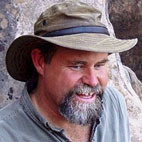
Craig Childs on “Apocalyptic Planet: Field Guide to the Everending Earth”
TICKETS
Monday July 29, 02013 at 7:30pm Marines’ Memorial Theater
Long Now Members can reserve 2 seats, join today! General Tickets $15
About this Seminar:
Craig Childs is a professional adventurer. When not living off-the-grid with his wife and two young sons at the foot of the West Elk Mountains, he is off exploring nature and writing about his excursions. Subject matters range from near-death encounters and the most remote places in the world to vivid descriptions of the underside of Manhattan and careful meditations on the future of our collective environmental future.
Childs’ adventures to the ends of the earth have given him a unique perspective on the environmental crises we collectively face. Even in the most dire and severe landscapes in the world, Childs finds stories of life and perseverance that runs contrary to the apocalyptic narratives that dominate the landscape.

Neal Stephenson, David Brin, and Chris Anderson donate to the Long Now Salon
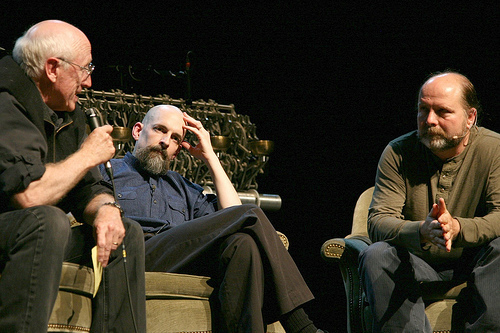
Photo of Stewart Brand, Neal Stephenson and Danny Hillis by Jacob Applebaum. From the Anathem book launch event that Long Now hosted in 02008.
Long Now would like to thank author Neal Stephenson (author of Anathem, The Baroque Cycle, and Snow Crash amongst others) for contributing to the Long Now Salon. Neal’s generosity helped us surpass $185,000 in funds raised for Salon construction. We are especially thrilled that he will be speaking in Entish when he visits.
Just supported @LongNow Salon so that I can have conversations in Old Entish when I am visiting SF http://t.co/KH9S3NRc8R ? via @longnow
— Neal Stephenson (@nealstephenson)
June 28, 2013
In the past week we’ve also received gifts to the Salon project from two other noted authors: scientist and Hugo, Locus, Campbell, and Nebula Award-winning science fiction writer David Brin, and former Editor in Chief of Wired Magazine Chris Anderson the author of The Long Tail, Free, and Makers: The New Industrial Revolution.
Support long-term thinking! Help the @longnow Foundation brickstart a new salon at Fort Mason https://t.co/yLZr8SOkmV
— David Brin (@DavidBrin) June 25, 2013
I'm helping build the @LongNow Salon, a beautiful place for long-term thinking http://t.co/5mayIFuFW0 will you join me? via @longnow
— Chris Anderson (@chr1sa) June 29, 2013
Thanks so much to them and to more than 130 of you who have contributed to the Long Now Salon so far.

June 27, 2013
Long Now Salon: Challenge Coin
The tradition (and mythos) of Challenge Coins goes back farther than reliable records can determine. Wikipedia tells an evocative (but unsubstantiated) story from World War I about an American who escaped German captivity only to nearly be executed by French soldiers, his allies, because he had no papers to identify him as a US solider. Finally he showed them a bronze medallion that only members of his squadron carried. It proved his identity and saved his life. So the Challenge Coin was born.
In the spirit of this tale, modern military members challenge each other to produce their unit’s coin. Commonly, the challenge is initiated by slamming a coin onto the bar. Those who take too long to produce their own coin or haven’t got one are on the hook for a round of drinks.
We have designed a custom Long Now Challenge Coin to mark the founding of our latest endeavor the Long Now Salon and celebrate the camaraderie of all the long-term thinkers who will gather there.
On one side the coin challenges you to “Seize the Millennium” and the other features a bristlecone pine. Bristlecones are the Earth’s oldest living organisms with a lifespan up to 5000 years. They are a symbol of Long Now’s mission to foster long-term thinking and responsibility.
A first edition Long Now Challenge Coin is available to everyone who donates $100 or more to the Long Now Salon project.
Our coins are made of hefty stainless steel and can be exchanged, once the Salon is open for business, for a special Long Now beverage of your choice. We don’t, however, recommend getting caught without one…

Stewart Brand's Blog
- Stewart Brand's profile
- 291 followers



